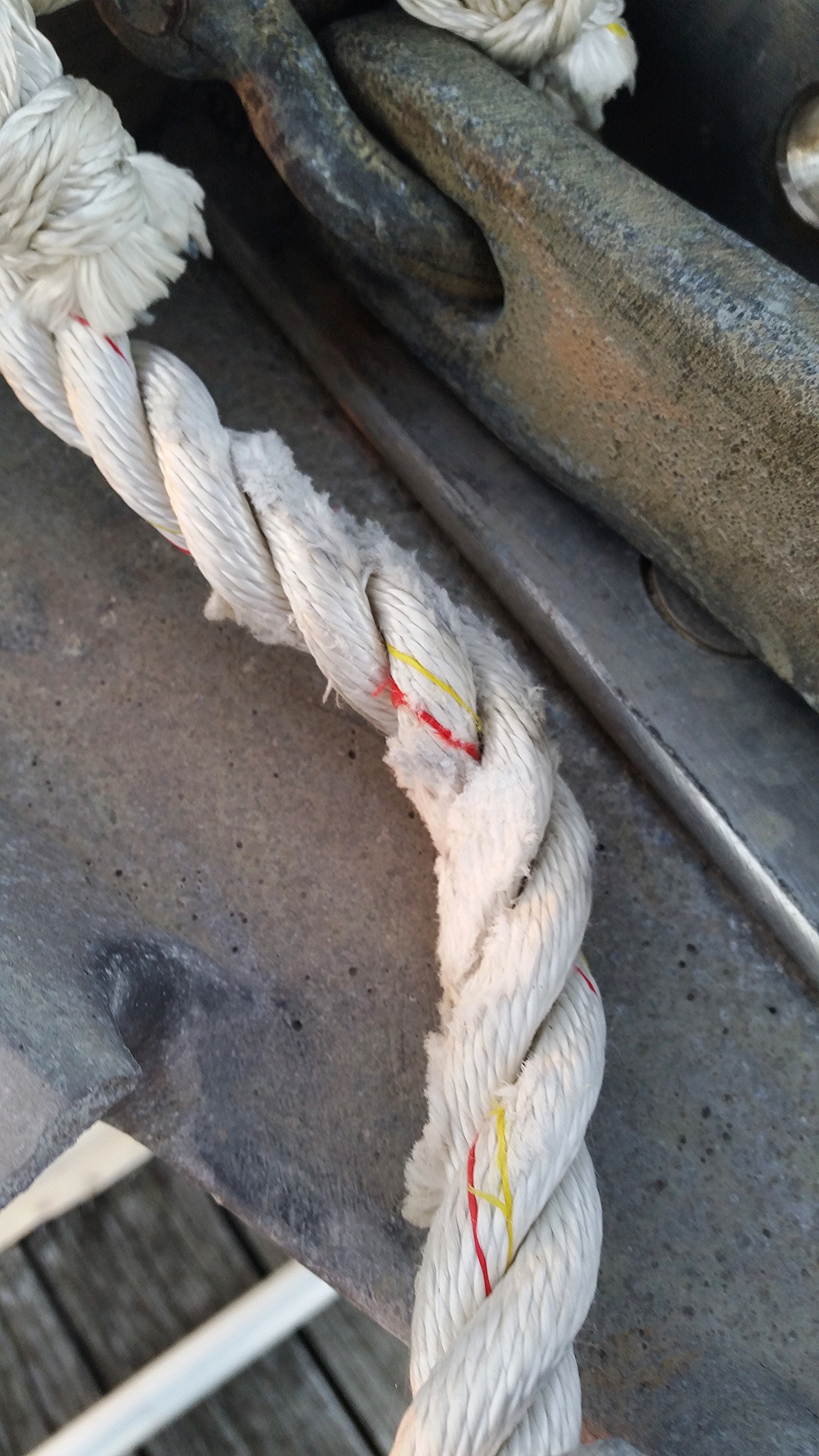While the best material for synthetic standing rigging is Heat Set SK78 Dyneema, the backstay plays by its own rules.
Backstays come in two flavors, static and adjustable.
Static backstays are just that, static. They are set up just like any other stay on the boat and adjusted infrequently.
Adjustable backstays are a superb addition to synthetic rigging system. They allow "on the fly" tension control of the headstay. If you are beating to windward and notice that your headsail's luff is sagging, simply tighten the adjustable backstay to increase tension on the headstay. The opposite applies when running, as more belly can be induced into the headsail by easing the backstay to slacken the headstay.
Since the backstay will be adjusted frequently, additional creep is not as detrimental. For reasons of reduced cost and additional chafe resistance, normal SK78 dyneema works wonderfully. I used a combination of New England Ropes STS-HSR and Samson Amsteel-Blue SK78 on my own adjustable backstay. The top part is STS-HSR, and the bottom half (where the adjustments take place) is in regular dyneema.
There are several ways to set up an adjustable backstay ranging from a hydraulic system, to a block and tackle system. The choice for synthetic backstay material greatly depends on the type of backstay adjuster.
Single backstays, especially on larger craft, tend to do better with a hydraulic system. Smaller crafts with lighter rigging loads can benefit from a simple but sturdy block and tackle setup.
When a single backstay is used with an adjuster, be it block and tackle or hydraulic, Heat Set Dyneema will shine supreme. The minimal creep can be absorbed by tightening the hydraulic ram. I would caution away from using regular dyneema with a hydraulic backstay adjuster because the hydraulic system has a fixed amount of distance it can travel. The creep of regular dyneema may consume most of the travel available by the hydraulic system. This can be rectified by moving the splice further up the backstay to absorb the creep experienced. Heat set dyneema will still creep during Phase I of its life cycle, but it will still be much less then regular dyneema would exhibit.
If it is a small craft with light rigging loads, a block and tackle will suffice with regular dyneema. The additional creep can be easily absorbed by an "initially long" block and tackle system. As the dyneema creeps and settles into Phase II of its life cycle, the block and tackle system will begin to look more reasonable in length while still having wonderful adjust-ability available to work with.
Split backstays have more options available to them. It is best to set the backstay up as a V and either set a block and tackle on one leg of the backstay or create a slide system that will squeeze the backstays together to provide the tension. Smaller craft with lighter rigging loads can get away with the simple to install and adjust "block and tackle" system, where larger craft will benefit from the slide system.
Either system will work wonderfully, but I prefer the peace of mind of a slide system as compared to a block and tackle. My fear with a block and tackle is if the blocks were to break or the pulley line come free, the whole backstay would go slack and could lead to damaging consequences. The slide system is safer because if the slides were to break, the backstay is still secured and tensioned.
The slide system is very easy to manage and adjust, even in high winds with large sails exerting tremendous loads onto the rigging. The slides pinch the backstays together which then increases the tension on them. To tighten the backstay (and in turn the headstay), simply slide the system down. To loosen the backstay (and in turn the headstay), slide the system up.
Due to the slides passing over the backstays which will attribute a negligible amount of chafe, the use of a more chafe resistant rope is preferred. For this reason, the lower half of the backstay is Samson Amsteel-Blue which is much more abrasion resistant then Heat Set Dyneema.
How much creep can be expected when using regular dyneema instead of heat set dyneema? A lot! The headstay on Wisdom (45 foot Morgan) is around 60 feet long and made of New England Ropes STS-HSR Heat Set SK78 Dyneema and creeped around 2 inches. The backstay is composed of 20 feet of STS-HSR and nearly 60 feet of Samson Amsteel-Blue SK78 Dyneema and creeped nearly 36 inches! This is not a comparison of New England Ropes to Samson, but instead a comparison of Heat Set vs Regular Dyneema. While Heat Set Dyneema is less resistant to abrasion and sharp turns, it is very resistant to creep, making it wonderful for static backstays and single backstays. The sharp turn for a split backstay should be performed by regular dyneema and simply calculate in tremendous amounts of creep.
In conclusion, the best material for a synthetic backstay greatly depends on the type of backstay in question.
Heat set dyneema is best for single adjustable backstays and static backstays.
Regular dyneema is best for split backstays with an adjuster.














